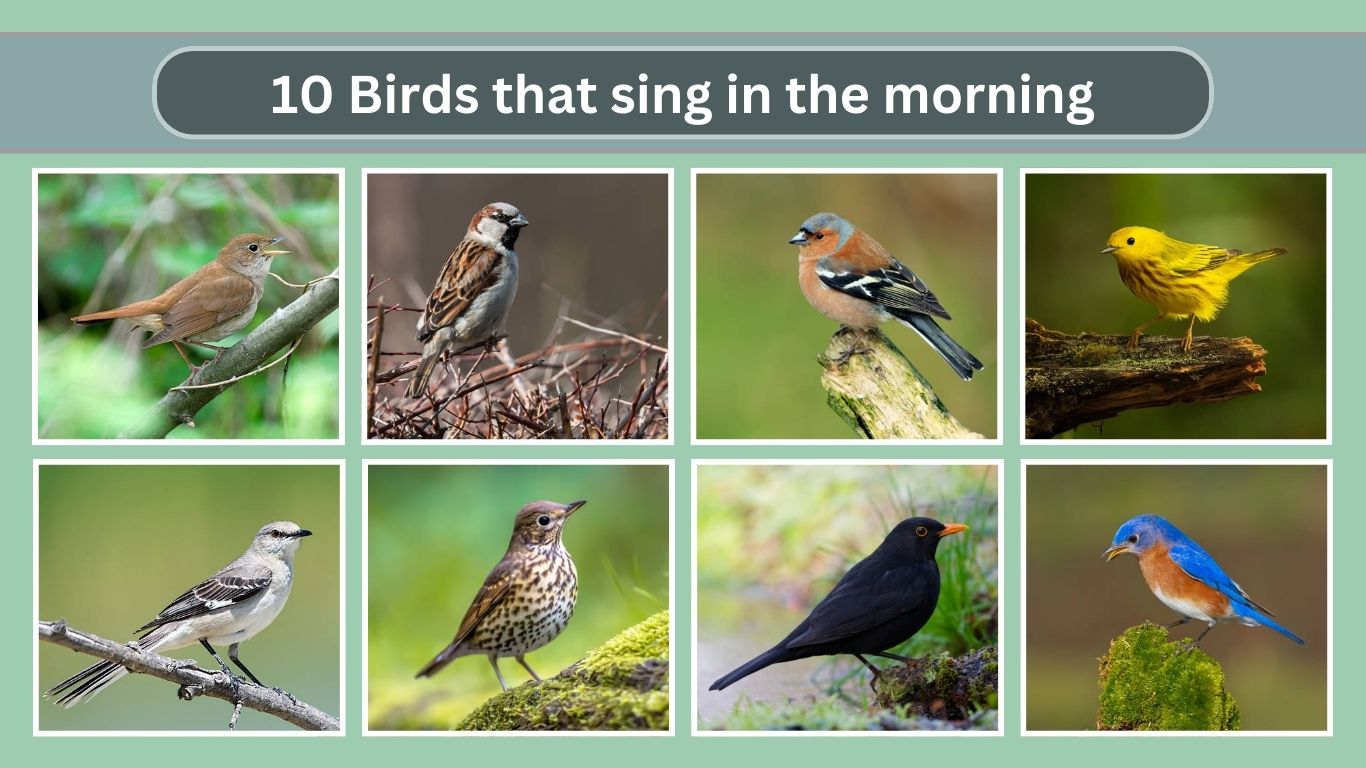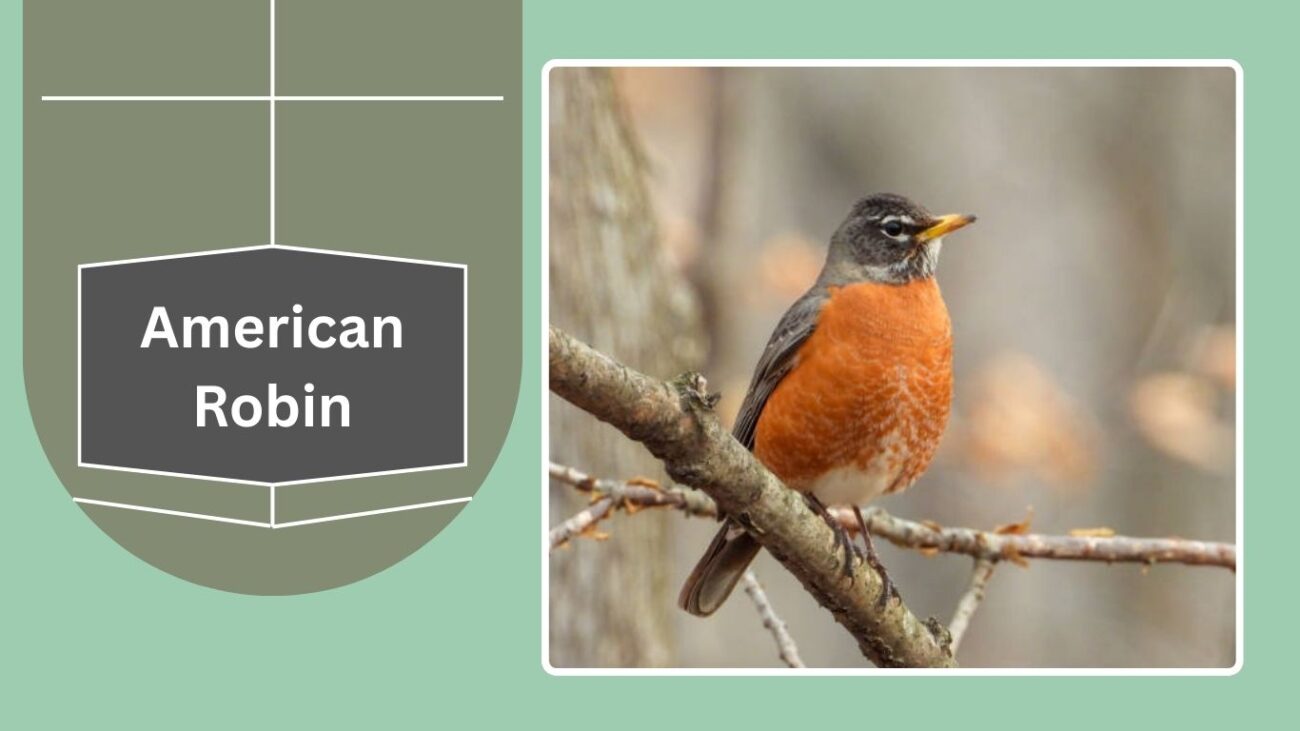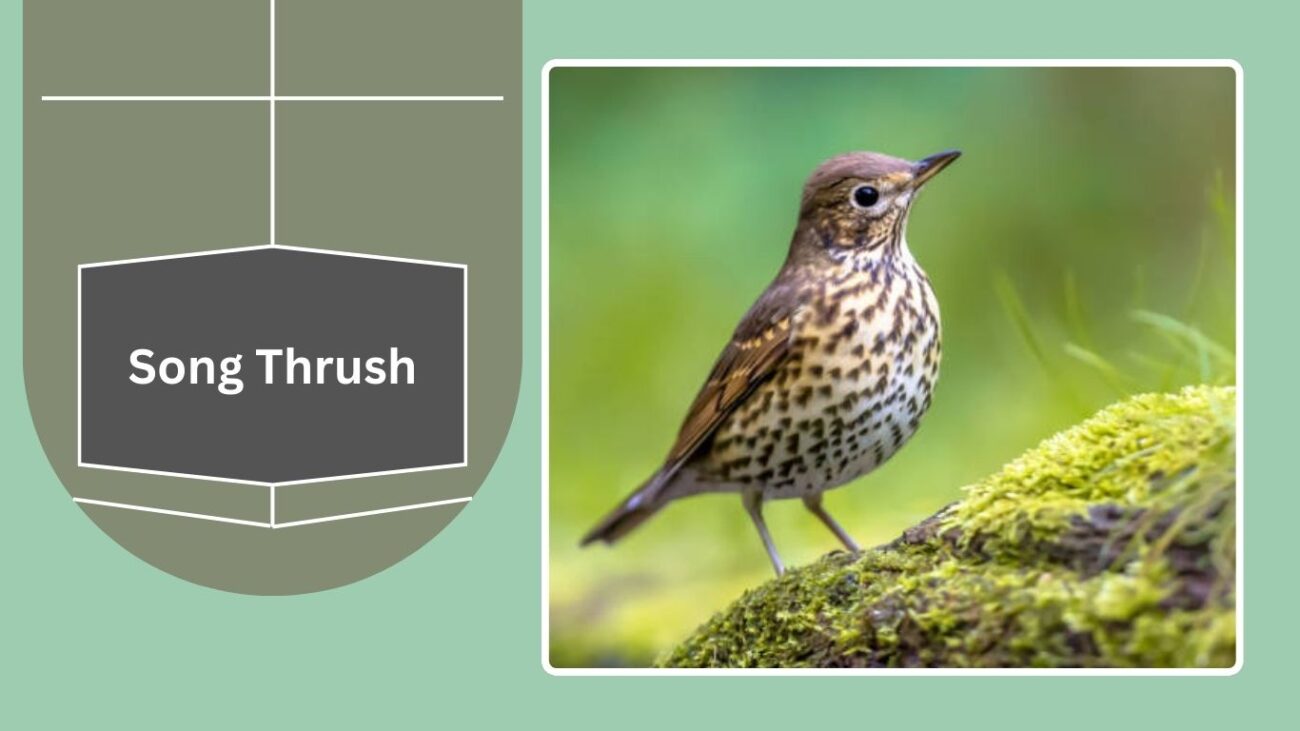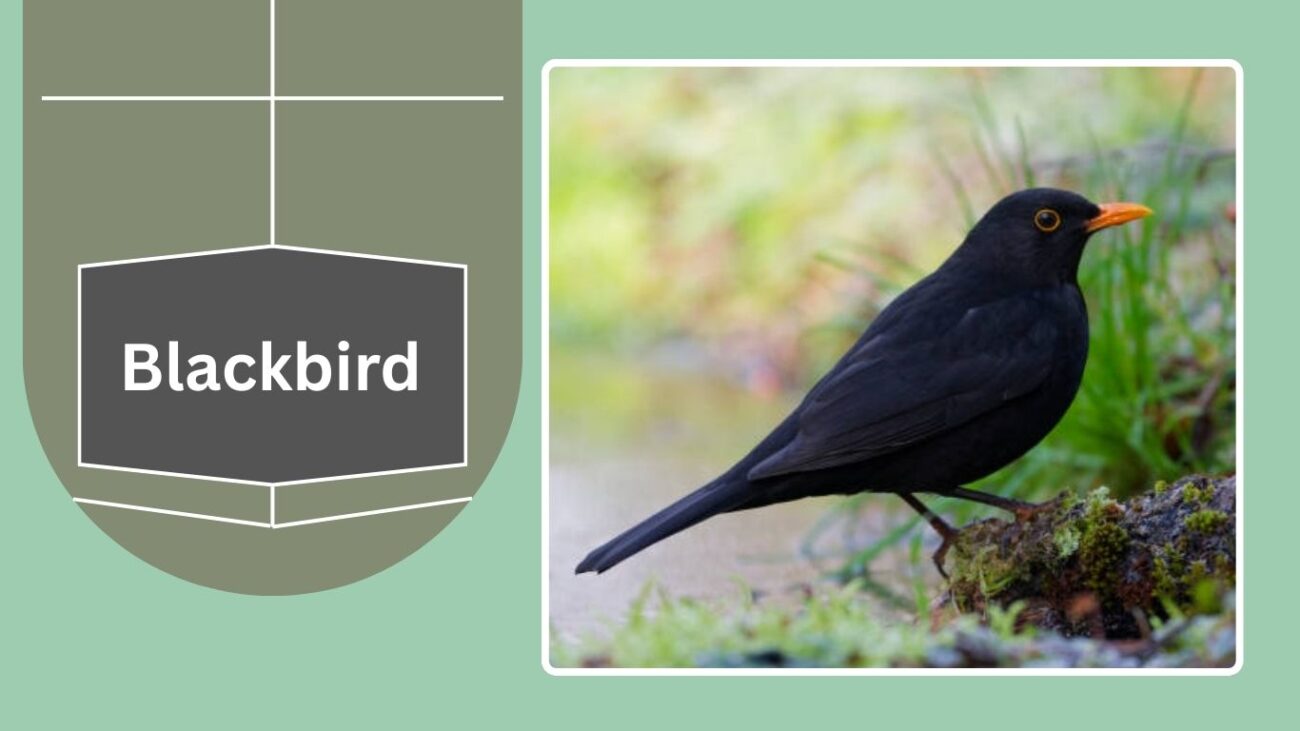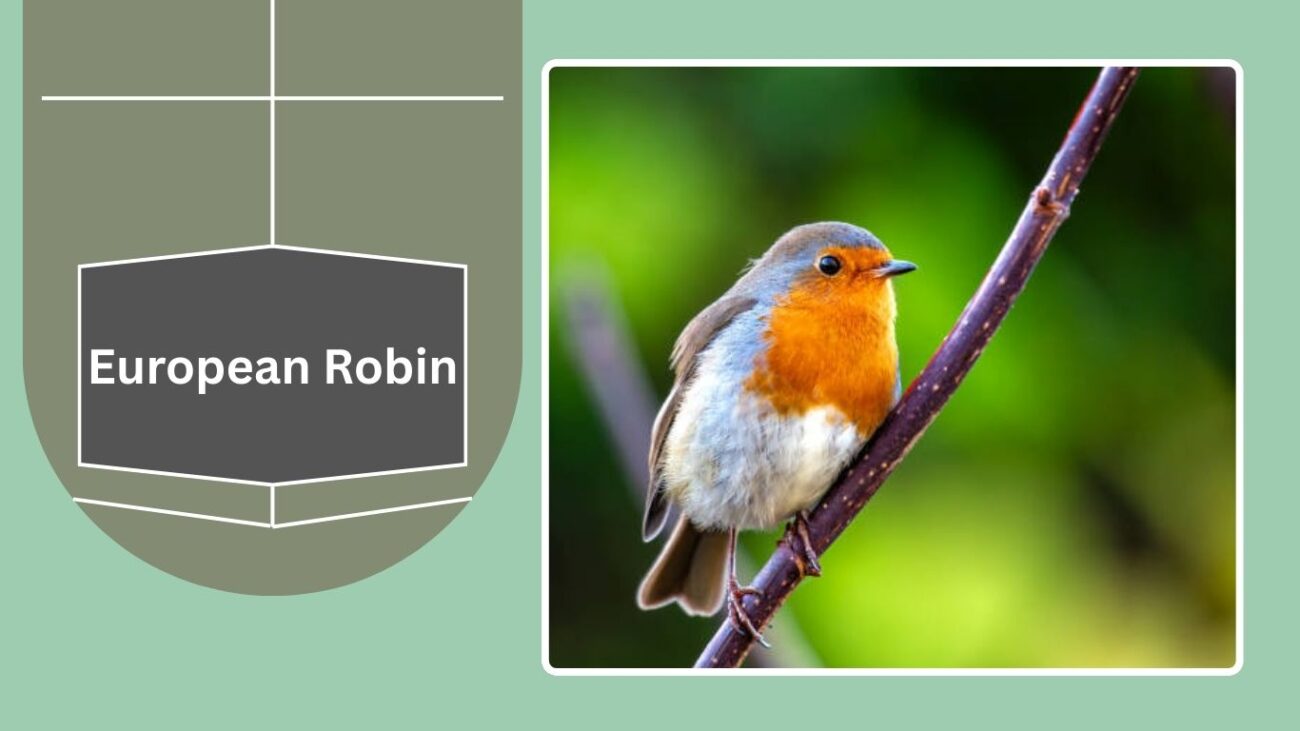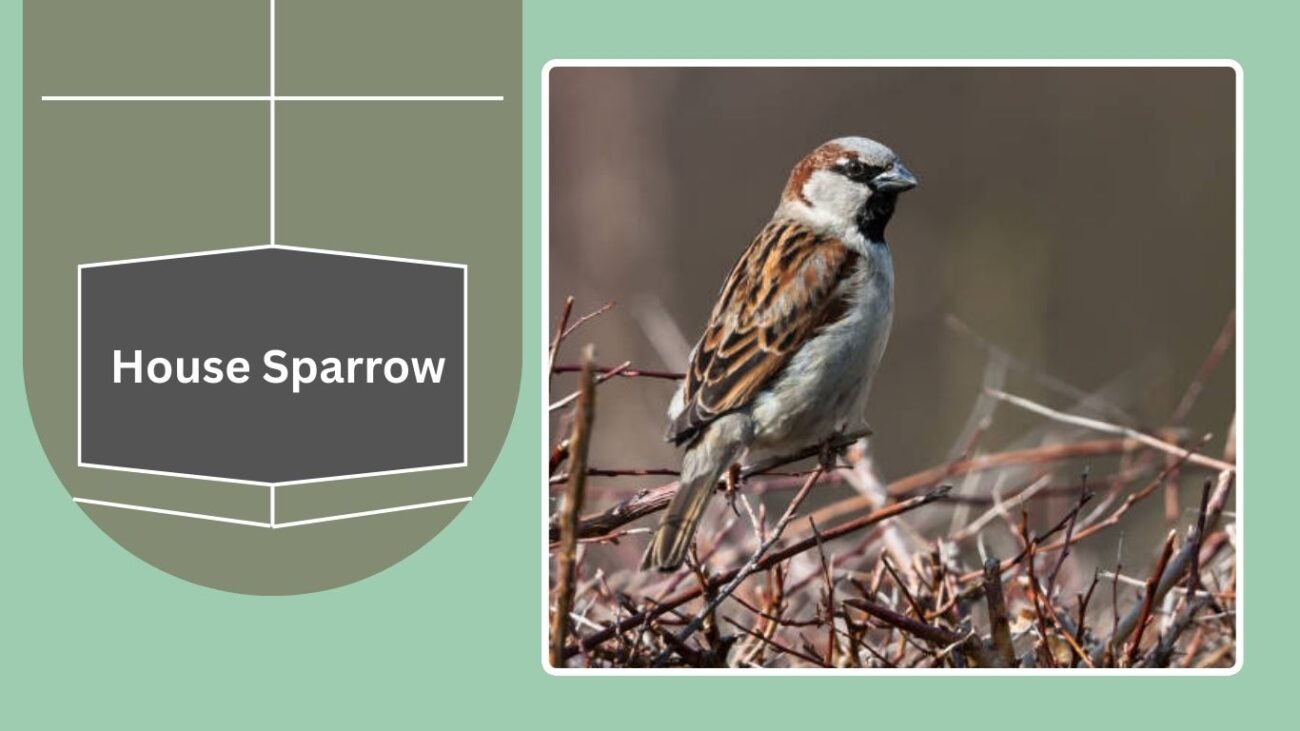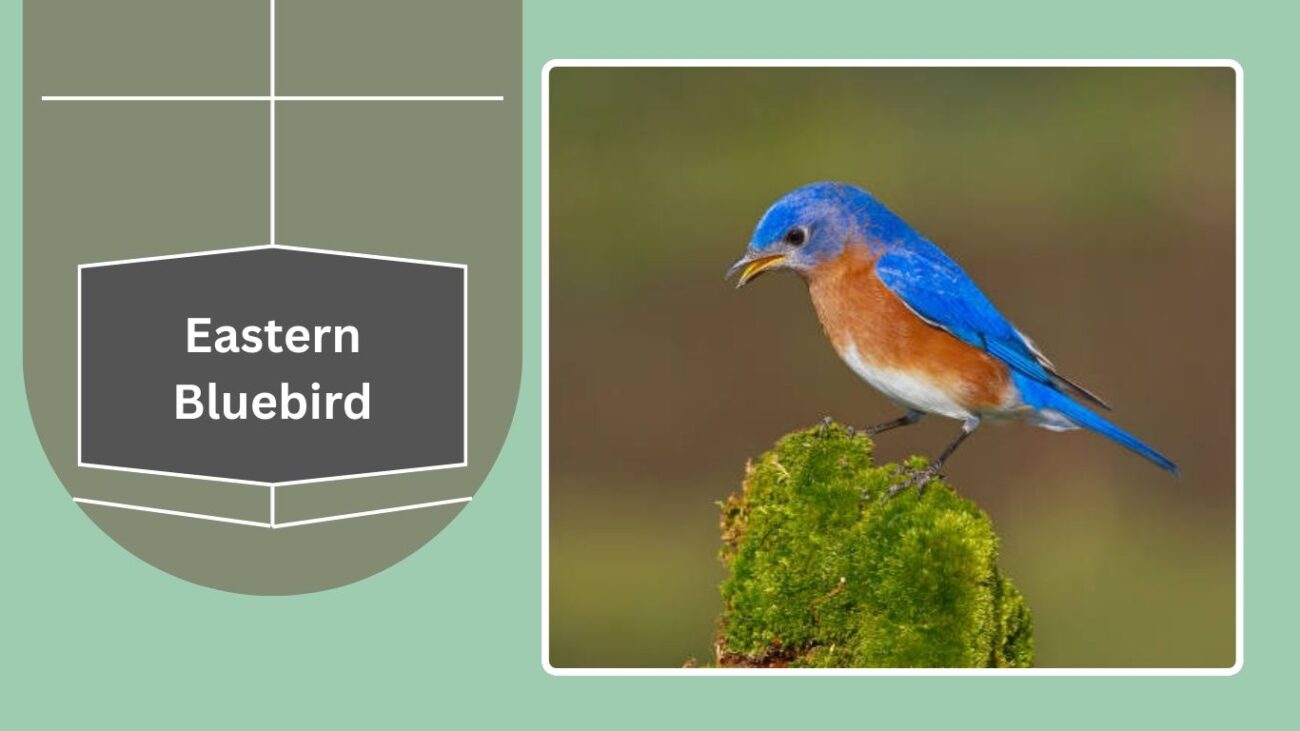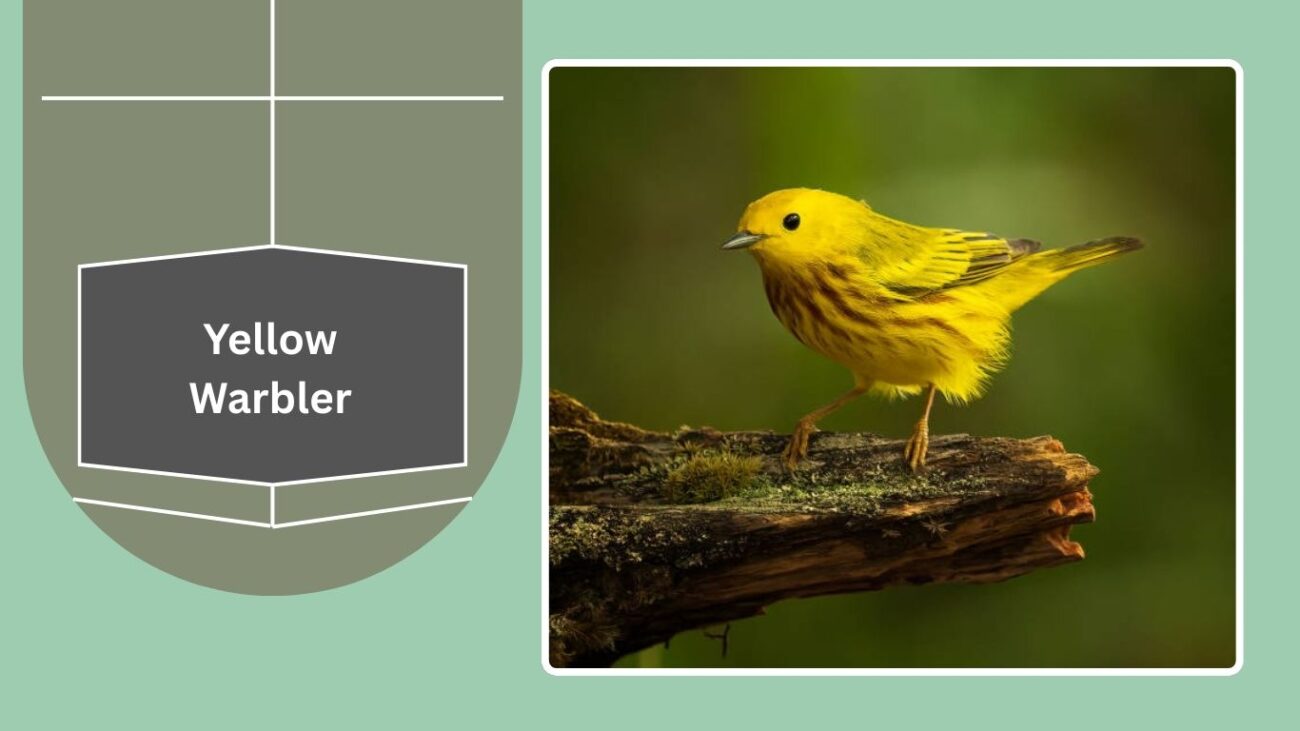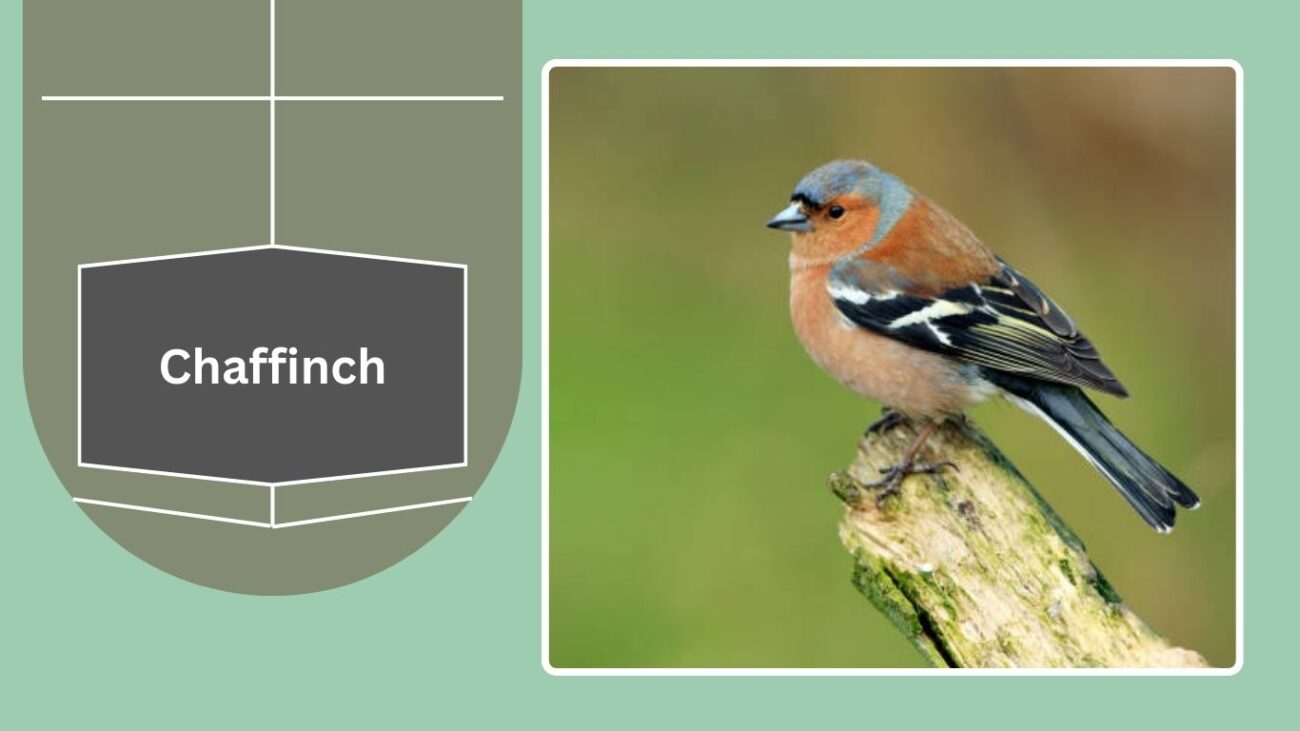Waking up to the sound of birds singing at dawn is one of nature’s most peaceful experiences. Many bird species use the early morning hours to mark their territory and attract mates with their songs. From the melodic notes of the nightingale to the cheerful chirps of sparrows, these feathered musicians create the famous “dawn chorus.” Below, we explore 10 birds known for their morning songs.
1. American Robin
The American Robin (Turdus migratorius) is one of the most iconic morning songbirds in North America. Its rich, melodious song is often considered the first sign of dawn, making it a central part of the early morning “dawn chorus.” Robins are also viewed as a harbinger of spring since they become more visible and vocal during the season. Their strong territorial call helps them defend their space and attract mates.
Identification
- Medium-sized bird, about 9–11 inches long
- Distinctive orange-red breast that makes them easy to spot
- Grayish-brown back and wings with a lighter underbelly
- White markings around the eye (eye ring)
- Long, dark tail often held upright
- Males usually appear more vibrant in color compared to females
Habitat
American Robins are incredibly versatile and can thrive in a variety of environments. They are found in woodlands, meadows, suburban yards, gardens, and city parks. During breeding season, they prefer areas with open ground for foraging and trees or shrubs for nesting. Their adaptability has made them one of the most widespread songbirds in North America.
Diet
Robins feed primarily on earthworms, insects, and caterpillars, especially during the breeding season when protein is crucial for raising chicks. In fall and winter, they shift to a fruit-heavy diet, consuming berries such as holly, sumac, and crabapple. Their ability to switch diets seasonally helps them survive in diverse habitats and climates.
Behavior
Robins are diurnal and highly active during the day, but they are best known for their early morning singing. Males start singing before sunrise to establish territory and attract females. They are also skilled hunters, often seen hopping across lawns and cocking their heads to locate earthworms underground. In colder months, robins may form large flocks of hundreds or even thousands of birds, roosting together in trees near food sources.
2. Song Thrush
The Song Thrush (Turdus philomelos) is a well-known European bird celebrated for its clear, melodic voice. Its song is often heard at dawn and dusk, and it is famous for repeating phrases, making its call distinct among morning singers. The Song Thrush has been admired in literature and poetry for centuries, symbolizing the beauty of the morning.
Identification
- Medium-sized thrush, around 8–9 inches long
- Warm brown upperparts with creamy underparts
- Dark brown or black arrow-shaped spots on the breast and belly
- Straight bill, slightly darker at the tip
- Pale legs, slimmer compared to other thrushes
Habitat
Song Thrushes prefer woodlands, hedgerows, gardens, and parks. They are especially common in areas with dense shrubs for nesting and open lawns or fields for feeding. In urban spaces, they are frequent garden visitors, often perched in trees or on rooftops to sing loudly in the early morning.
Diet
Their diet consists of insects, earthworms, and snails. Song Thrushes are particularly known for their unique feeding habit of breaking snail shells against stones to extract the soft body inside. In colder months, they rely heavily on berries and fruits, making them important seed dispersers.
Behavior
Song Thrushes are shy but highly vocal birds. Males sing early in the morning, often from elevated perches, to defend their territory and attract mates. They are solitary feeders but may gather in loose groups during migration or when food is abundant. Their repetitive singing style makes them easily recognizable, even from a distance.
3. Blackbird
The Blackbird (Turdus merula) is one of the most familiar dawn singers in Europe and parts of Asia. Males are especially famous for their rich, flute-like songs delivered from treetops, rooftops, or fences early in the morning. Their melodious voices often dominate the dawn chorus in spring and summer, creating a calming atmosphere that many people associate with peaceful mornings.
Identification
- Medium-sized thrush, about 9–11 inches long
- Males: glossy black plumage with a bright yellow-orange beak and eye-ring
- Females: dark brown with streaked underparts, lacking the male’s vivid colors
- Juveniles: resemble females but often have spotted breasts
- Slender body with a long tail
Habitat
Blackbirds are highly adaptable and live in woodlands, farmlands, gardens, and urban areas. They are among the most common garden birds across Europe and are comfortable living near humans. They prefer habitats with trees or hedges for nesting and open spaces or lawns for foraging.
Diet
Their diet is diverse and includes earthworms, insects, beetles, and other invertebrates, especially during the breeding season. In autumn and winter, they turn to fruits and berries, such as holly, elderberries, and apples. They are also known to visit garden feeders when natural food is scarce.
Behavior
Male Blackbirds are territorial and sing at dawn to mark their boundaries and attract mates. Their song is soft, varied, and highly musical, often lasting several minutes at a time. Blackbirds are ground feeders, frequently seen hopping across lawns in search of worms. During winter, they may form loose flocks, but males remain highly aggressive within their territories during breeding season.
4. European Robin
The European Robin (Erithacus rubecula) is one of the most beloved songbirds in Europe, easily recognized by its charming appearance and sweet, melodic song. Often called the “gardener’s friend,” it sings throughout the year, but its dawn chorus is especially striking in spring and summer. Despite its small size, the robin’s song is powerful and clear, often one of the first sounds heard at sunrise.
Identification
- Small bird, about 5–6 inches long
- Bright orange-red breast and face, bordered with gray
- Olive-brown back and wings with a whitish belly
- Large, dark eyes and a thin pointed beak
- Both males and females look nearly identical
Habitat
Robins inhabit woodlands, hedgerows, parks, and gardens. They are comfortable living close to humans and often follow gardeners, hoping to catch insects turned up by digging. They prefer territories with thick shrubs or undergrowth for nesting and protection.
Diet
Their diet mainly consists of insects, spiders, worms, and other small invertebrates during spring and summer. In colder months, they also feed on berries, seeds, and occasionally kitchen scraps provided in gardens. Their opportunistic feeding habits make them adaptable to many environments.
Behavior
Robins are solitary and territorial, with males singing early in the morning to defend their space and attract mates. Unlike many other birds, robins continue singing during winter to protect feeding grounds. They are bold around humans, often perching close by, but can be aggressive toward other robins, engaging in fierce territorial disputes.
5. House Sparrow
The House Sparrow (Passer domesticus) is one of the most widespread and familiar birds in the world. Though its song is not as melodious as that of thrushes or robins, sparrows are lively morning singers. Their cheerful “chirp, chirrup” calls fill the air at sunrise, especially in towns and villages where they gather in flocks.
Identification
- Small bird, about 6–7 inches long
- Males: gray crown, black bib, chestnut-brown nape, and streaked brown back
- Females: dull brown overall with lighter underparts and no black bib
- Short, stout beak suited for seed-eating
- Compact body with rounded wings and a short tail
Habitat
House Sparrows thrive in urban, suburban, and rural settings. They are closely associated with human settlements, often nesting in buildings, roofs, and crevices. They are rarely found in dense forests or remote natural habitats, preferring areas where food is easily accessible.
Diet
Their diet mainly consists of seeds, grains, and crumbs from human food sources. During the breeding season, they also feed insects to their chicks for protein. House Sparrows are frequent visitors to bird feeders, especially those with millet, corn, or sunflower seeds.
Behavior
Sparrows are highly social birds, often gathering in noisy flocks. At dawn, males begin chirping persistently from rooftops, trees, or wires to mark territory and attract mates. They are aggressive defenders of their nesting sites and are known to displace native species in some regions. Despite this, their lively morning calls contribute to the urban dawn chorus worldwide.
6. Northern Mockingbird
The Northern Mockingbird (Mimus polyglottos) is renowned for its exceptional vocal abilities. Unlike many birds that sing only a few songs, the mockingbird can mimic the calls of dozens of other birds and even mechanical sounds. Its dawn chorus is vibrant, varied, and often one of the longest-lasting among songbirds, making it a true standout in the morning choir.
Identification
- Medium-sized songbird, about 8–10 inches long
- Gray upperparts with a paler belly
- White wing patches and long white outer tail feathers, especially visible in flight
- Slender body with a relatively long tail
- Males and females look nearly identical
Habitat
Northern Mockingbirds prefer open habitats with scattered shrubs and trees. They are common in suburban areas, parks, farmlands, and gardens, often perching on fences, rooftops, or treetops to deliver their loud songs. Their adaptability has allowed them to spread widely across North America.
Diet
Their diet includes insects such as beetles, ants, and grasshoppers during summer, while in winter they shift toward fruits and berries like holly, mulberries, and elderberries. They are opportunistic feeders and sometimes visit backyard feeders for mealworms or fruit offerings.
Behavior
Mockingbirds are territorial and highly vocal. Males sing loudly at dawn and often throughout the day to defend their territory and attract females. A single mockingbird may have a repertoire of over 100 different sounds. They are also aggressive defenders of nests, sometimes dive-bombing much larger animals or humans who get too close. Their diverse and continuous singing makes them one of the most prominent contributors to the dawn chorus.
7. Common Nightingale
The Common Nightingale (Luscinia megarhynchos) is one of the most celebrated songbirds in Europe and Asia, admired for its powerful and beautiful voice. Its song is especially famous for the variety of notes, rich tones, and emotional depth it carries. While nightingales often sing at night, their morning song is equally enchanting and plays a vital role in the dawn chorus.
Identification
- Small, plain-looking bird, about 6–7 inches long
- Brown upperparts with a slightly reddish tail
- Pale underparts with a buff or whitish belly
- Slim build with large, dark eyes
- Lacks bright markings, making it less striking in appearance compared to its voice
Habitat
Nightingales prefer dense, scrubby habitats, woodlands, and thickets, often near water sources. They are found in Southern and Central Europe, the Middle East, and parts of Asia. During migration, they can also be seen in open fields and gardens with enough cover.
Diet
Their diet consists mainly of insects, beetles, caterpillars, and other invertebrates. During late summer and autumn, they also consume berries and fruits to build energy reserves for migration.
Behavior
Males are the primary singers, beginning their rich melodies in early spring to attract mates and establish territories. They sing at both dawn and dusk, and some continue through the night, giving the bird its famous name. The nightingale’s song can contain over 200 different phrases, making it one of the most complex vocalists in the bird world. Despite their plain appearance, their singing ability has made them a symbol of beauty and inspiration in literature, poetry, and music.
8. Eastern Bluebird
The Eastern Bluebird (Sialia sialis) is a charming and brightly colored songbird found across North America. Its soft, melodious warble is often heard in the early morning, bringing a gentle and cheerful tone to the dawn chorus. Bluebirds are also considered symbols of happiness and renewal, often associated with the arrival of spring.
Identification
- Small thrush, about 6–8 inches long
- Males: brilliant blue back, wings, and tail with a reddish-orange breast and white belly
- Females: duller grayish-blue with a lighter orange breast
- Short, thin beak and round head
- Distinct upright posture when perched
Habitat
Eastern Bluebirds prefer open country with scattered trees, orchards, meadows, and farmlands. They are also common in suburban gardens and parks, especially where nest boxes are provided. Their need for open spaces makes them less likely to be found in dense forests.
Diet
Their diet is a mix of insects and fruits. During spring and summer, they feed heavily on beetles, grasshoppers, caterpillars, and crickets. In fall and winter, they switch to berries such as dogwood, sumac, and wild grapes. This seasonal diet flexibility helps them survive year-round.
Behavior
Eastern Bluebirds are gentle, social birds that are often seen perched on wires or fences, scanning the ground for insects. Males sing sweetly at dawn to establish territories and attract females. Their song is soft but persistent, a series of short whistles and warbles. Bluebirds are cavity nesters, often using old woodpecker holes or nest boxes. They form small flocks in winter, sometimes joining other thrushes for foraging.
9. Yellow Warbler
The Yellow Warbler (Setophaga petechia) is one of the most vibrant and cheerful dawn singers in North America. Its sweet “sweet-sweet-I’m-so-sweet” song is easily recognized in the early morning chorus of spring and summer. These small, energetic birds add a lively brightness both in color and in voice wherever they are found.
Identification
- Small bird, about 4–5 inches long
- Bright yellow plumage across the body
- Males: more vivid yellow with reddish streaks on the chest
- Females: paler overall, lacking strong streaking
- Thin, pointed beak ideal for insect hunting
Habitat
Yellow Warblers thrive in wetland edges, thickets, orchards, and riparian habitats. They prefer areas with shrubs and small trees near water, but during migration, they can be found in gardens, parks, and even urban areas.
Diet
Their diet consists mainly of insects such as caterpillars, beetles, midges, and spiders. In breeding season, insects make up nearly their entire food intake. During migration, they may also consume berries and other small fruits for extra energy.
Behavior
Yellow Warblers are active and restless, constantly flitting among branches in search of insects. Males sing persistently at dawn to mark territory and attract females. Their song is one of the earliest to begin at sunrise, often continuing well into the day. These birds are also known for aggressively defending their nests from cowbirds, which try to lay eggs in them.
10. Chaffinch
The Chaffinch (Fringilla coelebs) is one of the most widespread and well-known songbirds across Europe. Its bright, energetic song is among the most common sounds of the dawn chorus, particularly in spring. Male chaffinches sing in a lively, cascading series of notes, often repeated from prominent perches like treetops or rooftops.
Identification
- Medium-sized finch, about 6 inches long
- Males: striking plumage with a reddish-pink breast, blue-gray cap, and greenish back
- Females: duller brown with subtle markings, less colorful than males
- White wing bars and outer tail feathers noticeable in flight
- Strong, conical beak adapted for seed eating
Habitat
Chaffinches inhabit woodlands, farmlands, hedgerows, parks, and gardens. They are very common near human settlements and adapt well to a variety of environments. In winter, they may form large flocks, often mixed with other finches and sparrows.
Diet
Their diet mainly consists of seeds, grains, and buds. In spring and summer, they switch to insects such as caterpillars and aphids, which provide essential protein for raising chicks. Their strong beaks allow them to crack open tough seeds with ease.
Behavior
Male Chaffinches are highly territorial and sing vigorously at dawn to assert dominance and attract mates. Their song is a fast, descending phrase ending with a flourish, often described as cheerful and bright. They are ground feeders, frequently hopping in open areas for food. During winter, they become more social, joining flocks, but in the breeding season, males aggressively guard their territories.

